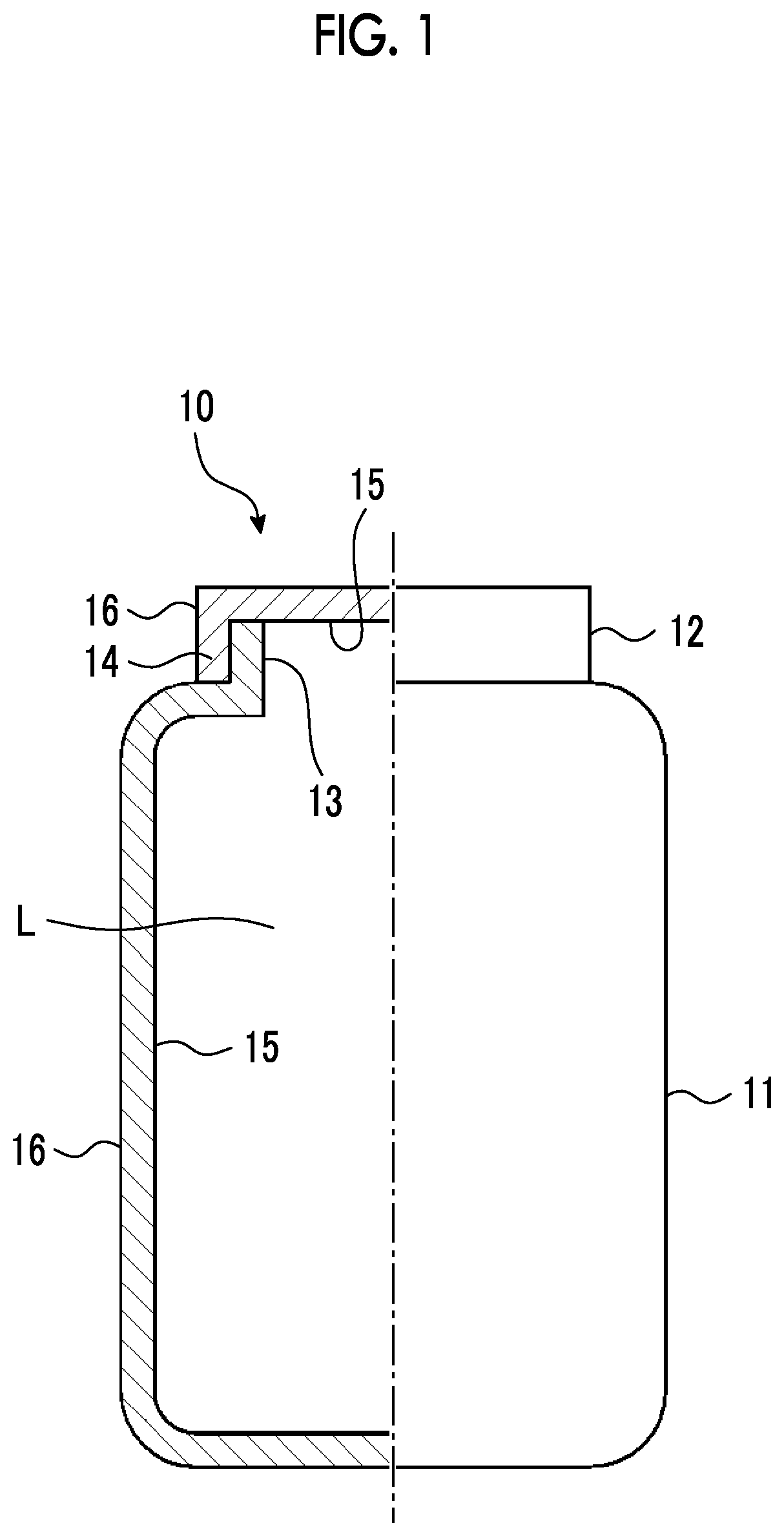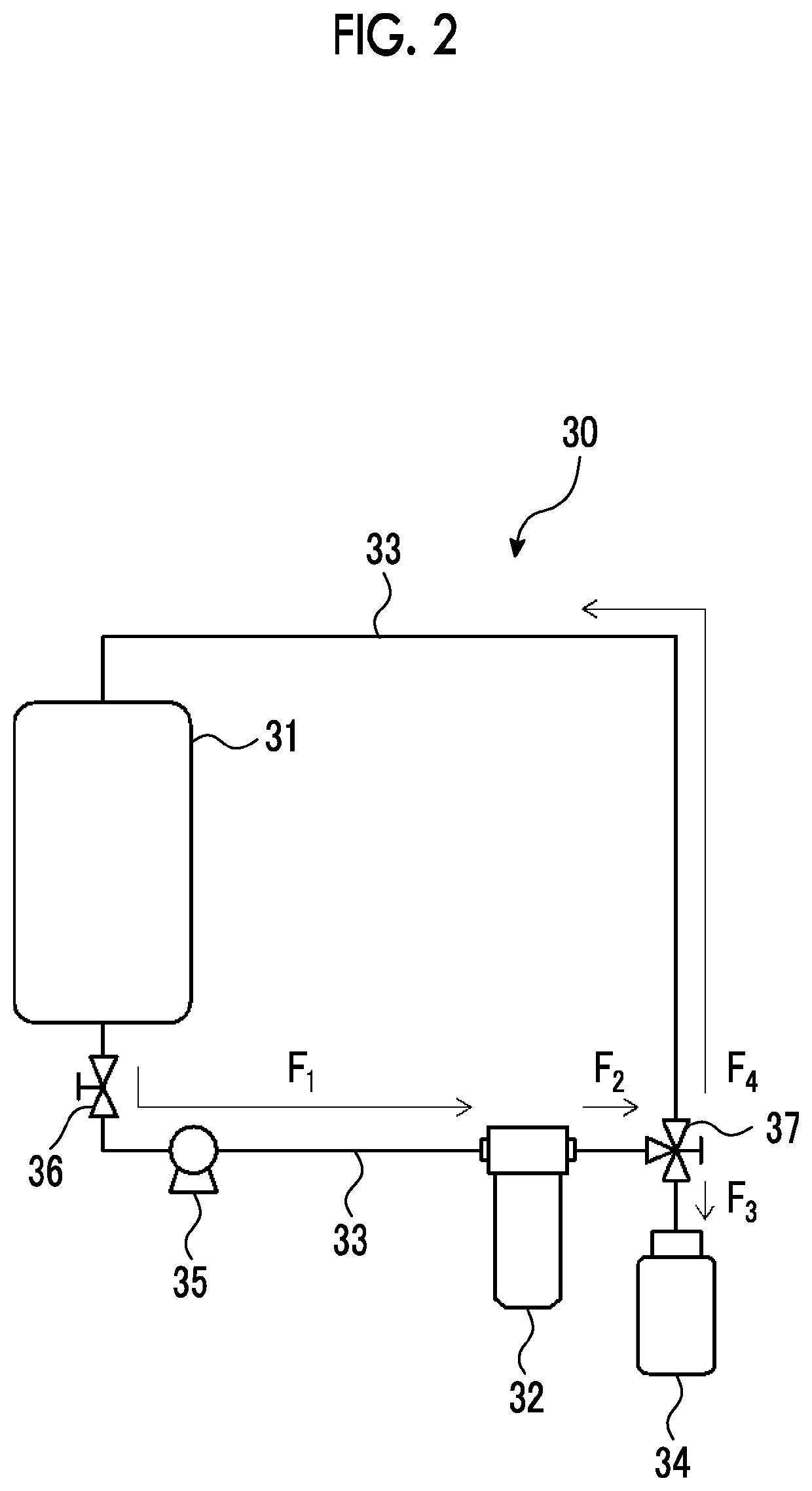Member, container, chemical liquid storage body, reactor, distillation column, filter unit, storage tank, pipe line, and chemical liquid manufacturing method
- Summary
- Abstract
- Description
- Claims
- Application Information
AI Technical Summary
Benefits of technology
Problems solved by technology
Method used
Image
Examples
examples
[0404]Hereinafter, the present invention will be more specifically described based on examples. The materials, the amount and proportion of the materials used, the details of treatments, the procedure of treatments, and the like shown in the following examples can be appropriately modified as long as the gist of the present invention is maintained. Accordingly, the scope of the present invention is not limited to the following examples.
[0405]For preparing chemical liquids of examples and comparative examples, the handling of containers, the preparation, filling, storage, and analytical measurement of chemical liquids were all performed in a clean room of a level satisfying ISO class 2 or 1. In order to improve the measurement accuracy, in measuring the content of an organic compound and the content of a metal component, in a case where the content of the organic compound or metal component was found to be equal to or smaller than a detection limit by general measurement, the chemica...
example z
[0568]A container formed of SUS316L or a copolymer of tetrafluoroethylene and perfluoroalkoxyethylene (PFA) was subjected to a surface treatment under the conditions shown in Table 6.
[0569]Table 7 shows the surface structure of each container having undergone the treatment and the chemical liquid stored in the container.
[0570]Unless otherwise specified, among the following treatments for test, the treatment identical to the treatment described above was performed according to the same procedure as that adopted for the treatment descried above.
[0571]Furthermore, unless otherwise specified, among the descriptions in the following table, the description identical to the description in the above table has the same definition as the description in the above table.
TABLE 6Surface treatment methodElectropolishingLiquidCurrentTreatmentBasetemperaturedensitytimePost-treatmentPost-treatmentmaterialPre-treatment° C.A / dm2min12Example 201SUS316LBuffing with #400 abrasive501060AnnealingAcid treatm...
PUM
| Property | Measurement | Unit |
|---|---|---|
| Fraction | aaaaa | aaaaa |
| Percent by mass | aaaaa | aaaaa |
| Hansen parameter | aaaaa | aaaaa |
Abstract
Description
Claims
Application Information
 Login to View More
Login to View More - R&D
- Intellectual Property
- Life Sciences
- Materials
- Tech Scout
- Unparalleled Data Quality
- Higher Quality Content
- 60% Fewer Hallucinations
Browse by: Latest US Patents, China's latest patents, Technical Efficacy Thesaurus, Application Domain, Technology Topic, Popular Technical Reports.
© 2025 PatSnap. All rights reserved.Legal|Privacy policy|Modern Slavery Act Transparency Statement|Sitemap|About US| Contact US: help@patsnap.com



